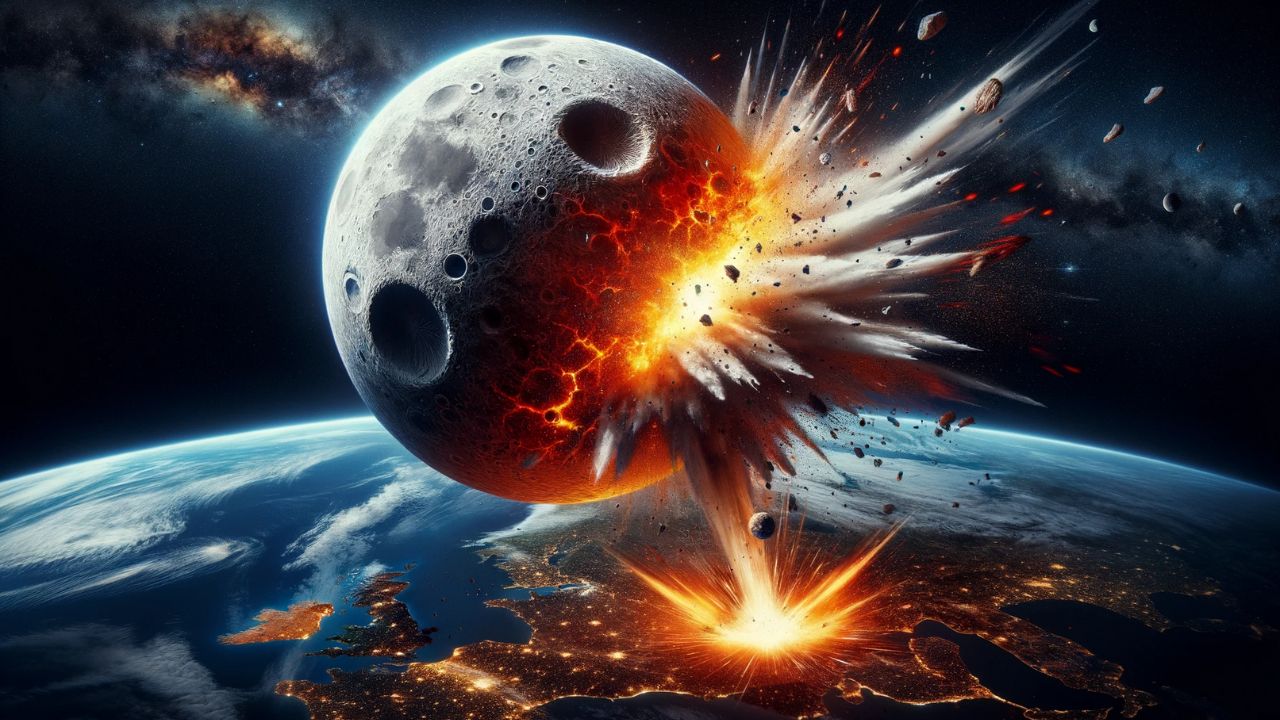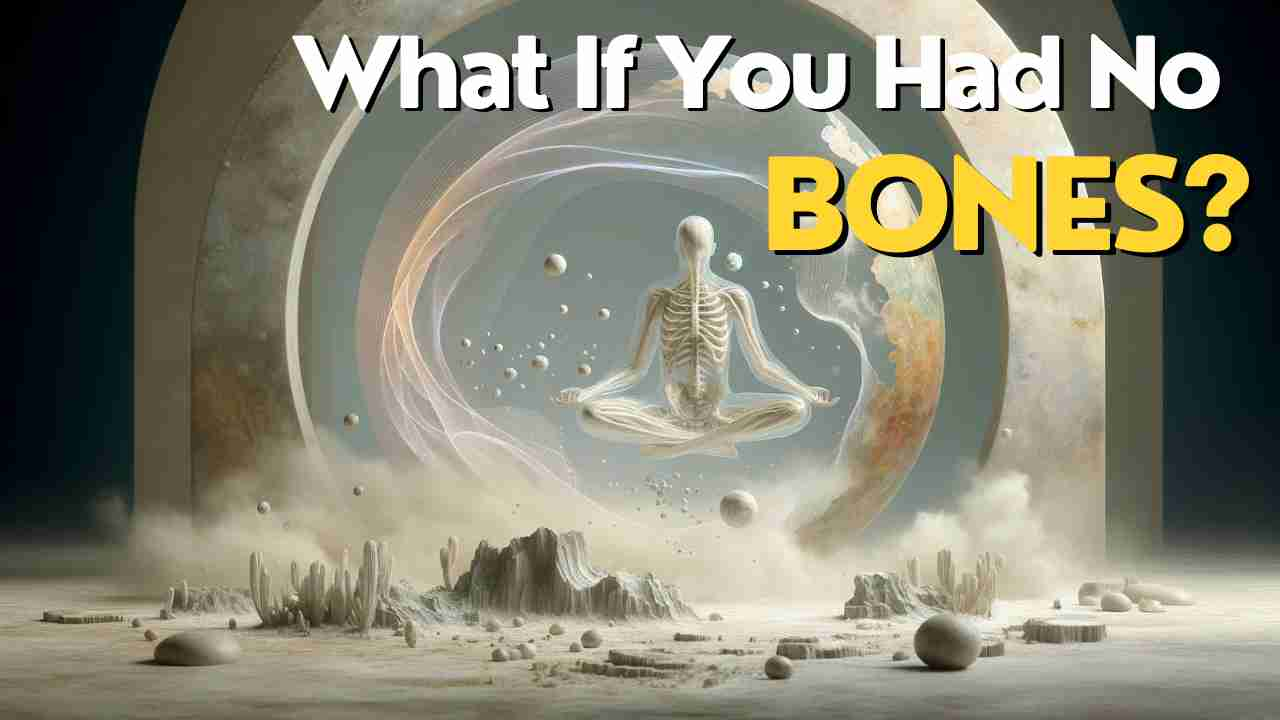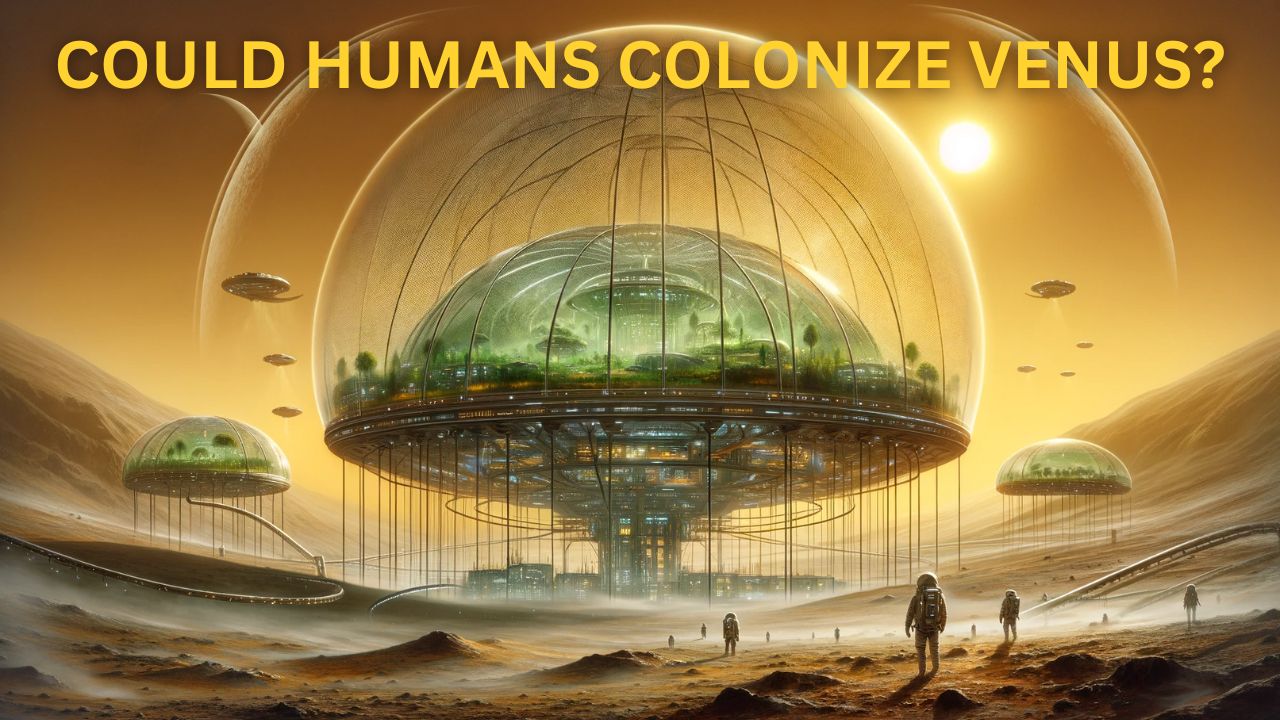Gaze up at the night sky. Our celestial companion, the Moon, hangs serene and silent, bathing the Earth in its silvery glow. It’s hard to imagine, but this gentle orb could become a harbinger of doom. What if, through some cosmic calamity, the Moon were to lose its celestial waltz and plummet towards Earth? Brace yourself, for we’re about to delve into the cataclysmic consequences of a lunar impact.
The Initial Collision: A Symphony of Destruction
The impact wouldn’t be a gentle kiss, but a monstrous planetary headbutt. Traveling at a mind-boggling speed of over 25,000 kilometers per hour, the Moon would unleash an incomprehensible amount of energy upon hitting Earth. Scientists estimate the force to be equivalent to billions of nuclear bombs detonating simultaneously. The collision would instantly vaporize the impact zone, creating a crater hundreds of kilometers deep and spewing molten rock into the atmosphere.
Earthquakes, Tsunamis, and a Molten Maelstrom:
The shockwaves from the impact would send Earth into a violent convulsion. Earthquakes of unimaginable magnitude would wrack the planet, pulverizing cities and triggering volcanic eruptions. Tsunamis, dwarfing anything witnessed before, would surge across continents, swallowing coastlines whole. The Earth’s crust would crack and buckle, spewing lava and searing the land with unimaginable heat.
Goodbye, Friendly Atmosphere:
The collision wouldn’t just scar the Earth’s surface; it would rip its atmosphere to shreds. Debris and dust would be flung into space, forming a massive ring system around our wounded planet. The remaining atmosphere would be choked with superheated gas, making it impossible for most life to breathe.
The Long Goodbye: A World of Fire and Ice
If you somehow survived the initial impact, your troubles wouldn’t be over. The Earth would enter a period of extreme instability. The axis of rotation would shift, leading to chaotic and unpredictable weather patterns. Temperatures would fluctuate wildly, with scorching days followed by frigid nights. Acid rain would fall from the poisoned sky, further scouring the remnants of life.
The Grim Possibility of Extinction:
The chances of the Moon actually crashing into Earth are thankfully minuscule. The Moon’s orbit is remarkably stable, and any celestial event that could dislodge it would likely obliterate both planets anyway. However, the thought experiment serves as a stark reminder of the fragility of our existence. A seemingly innocuous object in the sky, under the right circumstances, could become the harbinger of our world’s end.
A Call for Planetary Solidarity:
While the Moon may not be hurtling towards us today, the threats to our planet are very real. Climate change, resource depletion, and asteroid impacts are just a few of the challenges we face. Perhaps contemplating the apocalyptic scenario of a lunar crash can serve as a wake-up call. It reminds us that our planet is not an infinite resource, and it’s our collective responsibility to protect it. By working together and harnessing our scientific ingenuity, we can ensure that the Earth remains a hospitable haven for generations to come, and the only apocalypse we witness is the one confined to the realm of imagination.
Remember, this is just a hypothetical scenario. The Moon is in no danger of falling, and Earth is a pretty tough rock. But this thought experiment does highlight the incredible forces at play in our solar system and the delicate balance that sustains life on our planet. Let’s use this knowledge to appreciate the Earth we have and work towards protecting it for the future.
Moonfall FAQs: Answering the What-Ifs of a Lunar Apocalypse
The Moon, our celestial companion, hangs serenely in the night sky, seemingly a permanent fixture. But what if that peaceful orb became a harbinger of doom? What if, through some cosmic calamity, the Moon were to lose its celestial waltz and plummet towards Earth? This FAQ dives into the terrifying consequences of a lunar impact, answering your burning questions about this hypothetical apocalypse.
1. How much energy would be released on impact?
Imagine billions of nuclear bombs detonating simultaneously. That’s the level of energy we’re talking about. The collision would release an incomprehensible amount of energy, instantly vaporizing the impact zone and creating a crater hundreds of kilometers deep. Earth would be pummeled by shockwaves, triggering unimaginable earthquakes and volcanic eruptions.
2. What would happen to the atmosphere?
The Earth’s protective blanket wouldn’t stand a chance. Debris and dust would be flung into space, forming a massive ring system around our wounded planet. The remaining atmosphere would be choked with superheated gas, making it impossible for most life to breathe. Acid rain would fall from the poisoned sky, further scouring the remnants of life.
3. Would there be tsunamis?
Tsunamis of gargantuan proportions would surge across continents, dwarfing anything witnessed before. The impact would displace vast amounts of water, sending towering waves crashing into coastlines, swallowing them whole. Imagine entire cities disappearing beneath walls of water hundreds of meters high.
4. Could anyone survive?
The initial impact and its immediate aftermath would be catastrophic, making survival highly unlikely for most life on Earth. However, in some deep-sea or underground shelters, pockets of extremophiles, organisms thriving in extreme environments, might have a chance. But the long-term prospects for any survivors would be grim.
5. Would Earth’s rotation be affected?
Absolutely. The Moon plays a crucial role in stabilizing Earth’s rotation. Its absence would throw our planet into a chaotic spin, resulting in unpredictable and extreme weather patterns. Days and nights would become erratic, with scorching heat followed by frigid nights.
6. Is the Moon actually going to crash into Earth?
Thankfully, no! The Moon’s orbit is remarkably stable, and any celestial event that could dislodge it would likely obliterate both planets anyway. The chances of a lunar impact are minuscule, making it more of a cautionary tale than a probable doomsday scenario.
7. What can we learn from this thought experiment?
Contemplating the lunar apocalypse serves as a stark reminder of the fragility of our existence. It highlights the incredible forces at play in our solar system and the delicate balance that sustains life on Earth. This thought experiment can motivate us to appreciate the planet we have, work towards protecting it from real threats like climate change, and foster global cooperation to ensure a safe future for generations to come.
Remember, while the Moonfall scenario is purely hypothetical, it allows us to explore the limits of planetary resilience and the importance of safeguarding our precious Earth. Let’s use this knowledge to inspire curiosity, promote environmental awareness, and work towards a sustainable future for all.
https://youtu.be/AUMG-JKJQDk?si=FmOD6i0mY86NqvhK









